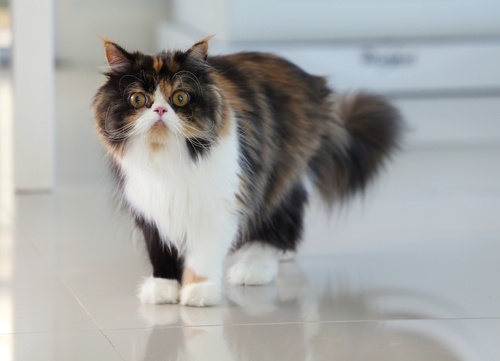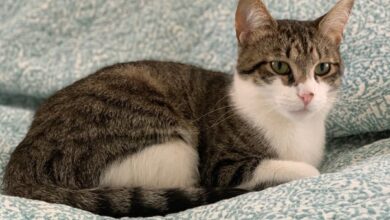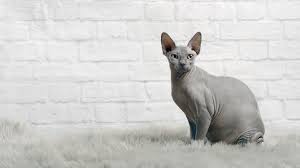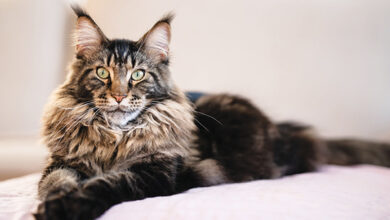Persian Cat: Introducing the Graceful and Regal Persian Cat

Persian Cat Frequently Asked Questions (FAQ)
Now that you have an in-depth understanding of Persian cat breeds, colors, care needs, and more, here are answers to some frequently asked questions:
Is a Persian cat a good pet?
Persians generally make wonderful family pets due to their loving, loyal nature. As long as their unique long coat care needs are met through regular grooming (brushing, cleaning folds), they are very affectionate companion cats. Some things to note are their heat/sun sensitivity and tendency to be “velcro” cats wanting constant attention. With dedication to their needs, Persians thrive as loving house pets.
How long do Persian cats live?
On average, purebred Persian cats have a lifespan of 10-15 years when kept as indoor pets and provide premium nutritional care. With responsible breeding minimizing genetic health issues, they can often live even longer into their mid-teens if cared for optimally. Proper diet, regular veterinary checkups, and avoiding extreme weather/sun exposure help maximize a Persian’s longevity.
What is the cheapest Persian cat?
The most affordable pet quality purebred Persian cats typically range from $300-$800 depending on sex, coat color, whether already desexed/vaccinated etc. Kittens from small hobby catteries/backyard breeders tend to be the cheapest, while potential kittens from top-winning pedigree lines naturally command premium prices. Focus first on humane adoption before considering any lower-cost options.
Why is it called a Persian cat?
The breed’s name derives from its probable geographic origins in the historic region of Persia (modern-day Iran). Artifacts and artworks trace Persian-type longhaired cats back to ancient Persians who prized and bred them. They were regularly traded and gifted throughout the Mediterranean world, spreading their distinctive silky coats and flat faces. Eventually arriving in Europe and North America, the name “Persian” stuck to honor their ancestral homeland.
How do you take care of a Persian cat’s coat?
Proper Persian coat care involves daily combing/brushing with a slicker brush and wire comb to remove loose hairs and prevent tangles/matting. Weekly or bi-weekly bathing also helps remove dirt and oils while distributing natural skin oils down through the coat. Regular grooming and professional de-shedding services are important for Persian owners to keep their silky coats healthy and manageable. Daily folding and cleaning of skin folds is also vital for hygiene maintenance.
Persian cats are one of the most popular and beloved longhaired breeds globally. With their docile temperaments, affectionate natures, and silk-like coats, it’s no wonder Persians have won the hearts of so many cat lovers.
A Brief History of the Breed
Persian cats have their origins in the Middle East, particularly around the area now known as Iran (formerly known as Persia, hence the breed’s name). Exactly when and how they were initially bred is uncertain, but historical records and artwork suggest they existed as early as the 16th century BC in ancient Persia.
Some key events in the breed’s development include:
- Persians were favored by royalty and regularly gifted between nations as prized presents, helping spread their popularity overseas. This assisted in their recognition as the longest domesticated pedigree breed.
- In the late 19th century, Persian cats began arriving in England and were exhibited at cat shows. Breeders worked to stabilize their exotic look through selective mating.
- The breed was recognized by various worldwide registries in the early 1900s after arriving in North America. Continued refinement led to today’s uniquely Persian features.
- Modern Persian bloodlines can be traced back to just a handful of foundation cats that influenced the overall type now seen in the show ring globally.
Through hundreds of years of selective breeding primarily for their unusually flat faces and luxurious double coats, the elegant Persian we know today was developed. Their unique look and sweet temperaments continue endearing them to cat lovers everywhere.
Persian Cat Breeds and Types
Within the overall Persian breed, there are two primary coat varieties recognized – the traditional longhaired and the semi-longhaired (aka “hybrid” or “doll-faced”). Let’s explore the key features of each:
Traditional Persian Cat
As the name implies, this is the original longhaired Persian type that we are most familiar with from historical portraits and descriptions. Some distinguishing traits include:
- Massive double coat that is exceptionally long, thick, and silky soft to the touch. Hair can exceed 12cm in length!
- Distinctive flat face and features like a squashed nose, wide-set eyes, and shortened jawline.
- Large, rounded eyes with an innocent, puppy-like expression. Eyes can be blue, copper, green, or odd-eyed.
- Stocky, muscular body type carried low to the ground on short legs.
- Tail is extremely full and plumed, resembling a bottlebrush.
Traditional Persians are only shown in solid colors like red, cream, blue, silver, etc., or in tabby patterns. Their flat features are vastly exaggerated compared to other cats.
Peke-face Persian Cat
The peke-face Persian (sometimes called Himalayan Face or “apple-headed”) is a slightly more moderate variant within the traditional longhaired style. Differences include:
- Slightly less squashed nose and face that is not quite as flat or shortened as a regular Persian.
- Eyes set a touch wider with less of a bug-eyed look.
- Gentler facial features overall that are intermediate between a traditional Persian and semi-longhair.
Peke-face Persians tend to be shown in colors with white spots, like the popular silver tabby & white. Their facial type is intermediate between the extremes of the traditional flat face and a semi-longhair.
Semi-longhaired Persian Cat
Also called “hybrids” or “dollface Persians,” this variety has a silky, semi-long coat that is much shorter than a traditional and luscious but not quite as dense. Key aspects include:
- Slightly longer nose and less of an emphasis on shortening the jawline and muzzle.
- Rounder head shape with eyes set wider like a domestic shorthair.
- Softer, less exaggerated facial features and finer bone structure than a traditional.
- Shown exclusively in longhair colorpoint/tortoiseshell variants like lilac, chocolate, etc., never solid colors.
Semi-longhaired Persians have gained popularity recently for their slightly more moderate appearance while retaining the signature long silky coat. They are essentially a cross between Persians and exotic shorthairs.
While all derived from the same ancestral Persian lines, these three varieties showcase a range in coat traits and extremes of the breed’s signature flat face. Choose the type that best matches your lifestyle and aesthetic preferences as a pet owner.
Persian Cat Price
With their lovely coats, pedigree lineage, and show potential, well-bred purebred Persian cats don’t come cheaply. Here’s an overview of typical purchase price ranges based on age, sex, and quality:
Kittens
- Pet quality kittens without papers from a backyard breeder can range from $300-$600
- Cattery-bred pet kittens with health checks start around $800-$1200
- Top show/breeding quality Persians from a top cattery easily fetch $1500-$3000 each depending on lineage.
Adult Cats
- Adult pet cats are $500-$1000, with discounts if already desexed/vaccinated
- Bred adult show cats with points awards easily up to $4000+
Additionally, some less common color/pattern combos like lynx points, chinchillas, or rare genetic combinations will incur premiums. Naturally, cats from top-winning show catteries with prominent ancestry command the highest costs overall.
Additional upfront expenses to consider include any pet registrations, initial veterinary checks/vaccinations/deworming, microchipping, housing accessories like a tall cat tree, scratching posts, etc.
With proper research and planning, you can find a new Persian companion within most budgets while still supporting responsible, registered cattery breeders. Pricing depends heavily on age, type, and genetics, so weigh your priorities when choosing a new furry friend.
World’s Most Expensive Persian Cat
As one of the most popular and prized pedigree cat breeds, it’s no surprise that Persian cats regularly top lists for the priciest pedigree felines ever sold. Here is one that stands out as the undisputed world record holder:
Purple Dragon
In 2014, a seal lynx point Siamese named Purple Dragon became the most expensive cat in history after selling at auction for a whopping $2 million! Some key details:
- Bred by California cattery Marsha Zell in the 1970s, Purple Dragon’s bloodlines and genetics were impeccable.
- He sired over 250 kittens in his career and appeared on the TV show “Late Night with David Letterman”.
- The astronomical sale price was primarily due to his status as one of the most prepotent breeding sires ever in the breed.
- His pawprint sculptures and tributes remain prized collector’s items for devoted catteni.
While not technically a Persian, Purple Dragon’s unprecedented sale still holds the Guinness World Record as the priciest pedigree cat purchase on record to this day. It exemplifies the esteem top show cats of legendary lineages can attain.
Persian lineage cats may not reach multi-million dollar tags regularly, but pedigree breeding programs around famous grand champion winners routinely sell for tens of thousands. Maintaining superior Persian lines remains lucrative for serious fancy catteries worldwide.
Black vs White Persian Cat
When considering Persian colors, black and white represent two striking yet very different options. Let’s explore the key attributes of each:
Black Persian
- Deep, lustrous black coat that truly highlights the glamour of their angora-like fur texture.
- Contrasts beautifully against the often copper or green eye colors of black Persians.
- Due to skin pigment, black cats often sunburn or develop hyperpigmentation more easily than lighter coats. Daily sunscreen is wise.
- Black shows dirt/dander more noticeably and requires more thorough grooming to retain a pristine look.
- Rarer color and thus commands a price premium from dedicated breeders. Kittens tend to cost 20-30% more than lighter colors.
Overall, jet-black Persians embody mystery and elegance but need dedicated care to maintain their glossy silk coat. Their color suits owners willing to lavish extra grooming time.
White Persian
- Snowy white fur makes their plump round features stand out adorably like cotton balls with eyes!
- With proper genetics, may be shown as a “bicolor” with a colored tail/mask, like blue cream, etc. Very sweet looking.
- Easier to disguise dirt/dander that would show on other colors. Grooming is reduced.
- Prone to staining, so keep claws trimmed to avoid fur discoloration from scratching.
- White walls/furniture must be protected! Their fur will show up everywhere
- Make sure to regularly check inside ears and folds for discoloration from secretions or debris.
- Be vigilant with sun protection as white coats have no pigment to offer natural defense. Severe burns can occur.
While white Persians require certain color-specific care, their plump round cotton ball aesthetic also makes them highly popular. Proper precautionary habits keep them glowing in their alabaster glory.




